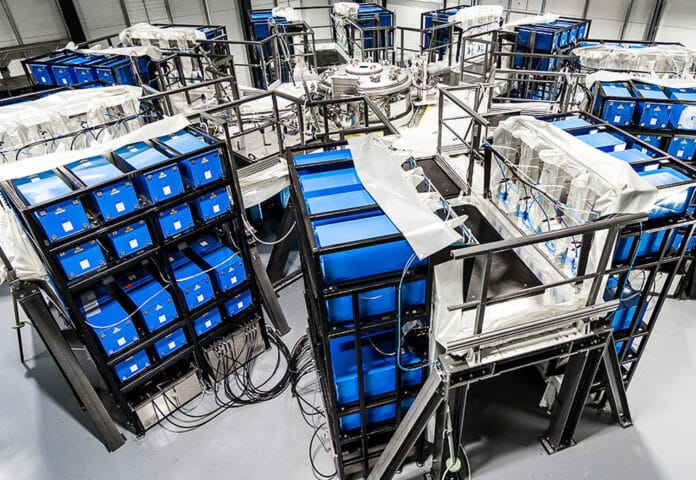First Light Fusion, the world’s leading inertial fusion company, has managed to increase the “standoff” distance – the distance travelled by the projectile to the fusion target – by more than 10 times. This is a significant milestone that could solve one of the crucial engineering challenges in designing a projectile fusion power plant.
This development is part of the company’s ongoing efforts to create a pilot power plant capable of producing commercial energy from fusion.
First Light is developing a new method for inertial confinement fusion, which involves utilizing their unique amplifier designs. By changing the requirements for the “driver,” they can explore new approaches, such as using a high-velocity projectile to create the extreme temperatures and pressures needed to achieve fusion. Standoff distance is the distance between where the ‘projectile’ is launched and the ‘target’ – where the fusion implosion happens.
However, the challenge lies in accurately launching the projectile at speeds of several kilometers per second while ensuring it remains in a solid state when it hits the fusion fuel. First Light is working on this issue, as their pilot power plant design requires a high degree of speed and accuracy. They have been conducting research on this with their Machine 3, which uses pulsed power to launch projectiles electromagnetically.
So far, the highest standoff distance achieved has been 10mm, which is sufficient for testing amplifier technology. However, a power plant would require a standoff distance of several meters.
As part of its experimental program, this month, First Light was able to increase the standoff distance from 10 mm to 10 cm, which is a significant 10x increase. The electric gun design used in the experiment seems to have worked well, and they were able to explore launching it to a high velocity on a high-energy pulsed power machine without melting, which is a crucial requirement for achieving a standoff.
The projectile was kept in a solid state over 10 cm by tailoring the electric gun foil and projectile thicknesses to the M3 current pulse. The simulations of the material strength were used to determine the desired thicknesses, which allowed for the projectile design to maintain its strength over a flight distance of 10 cm.
The shot was not only able to meet the primary objective, but it also set a new record as the highest energy electric gun ever tested.
To operate a continuous pulsed process, an inertial fusion power plant will require an amplifier approach, similar to an internal combustion engine. In this approach, the fuel will be contained in the amplifier target, and the fusion driver, which is a projectile fired at speed, will act as the spark plug. The target will be dropped into the reaction chamber, and the projectile will be fired at the target to trigger fusion.
First Light’s goal is to design a plant that is low-risk, simple, and scalable. By increasing the energy per shot and reducing the frequency, First Light aims to develop a smaller plant with a much lower risk.
First Light is working to tackle the remaining engineering challenges in designing a power plant, one of which is the standoff distance. The company’s advanced simulation capability allows it to trial thousands of options for this at pace.
“This is a milestone moment for First Light and the result of a huge amount of effort, time, and perseverance from the whole team,” said Mila Fitzgerald, a Scientist at First Light Fusion. “As we scale up our approach and look to design a pilot power plant based on First Light’s projectile approach – one of the key challenges is being able to fire a projectile at high speeds and from a further distance. That is the basis of our current pilot plant design. This experiment demonstrates a way for us to do that and is an exciting step in the right direction.”
“As we move into the era of commercialization of fusion energy, solving the key engineering challenges in a power plant is a core focus for the First Light team,” commented Dr Nick Hawker, Founder & CEO of First Light Fusion. “We know the physics of inertial fusion works. Our recent success at Sandia shows that our amplifiers work. To reach commercial, cost-effective, and scalable fusion energy as part of our future energy mix, we need to solve the power plant fundamentals in a way that works with the physics.”
“With our unique approach, a first-of-its-kind fusion power plant is designed to be as simple and low-risk as possible, simplifying the pathway to commercial fusion energy. We have taken on the standoff challenge because it unlocks huge benefits elsewhere. This is a very significant derisking moment. There is further work to do. Now we have a solid projectile, and we move on to studying and controlling the accuracy of the launch.”
